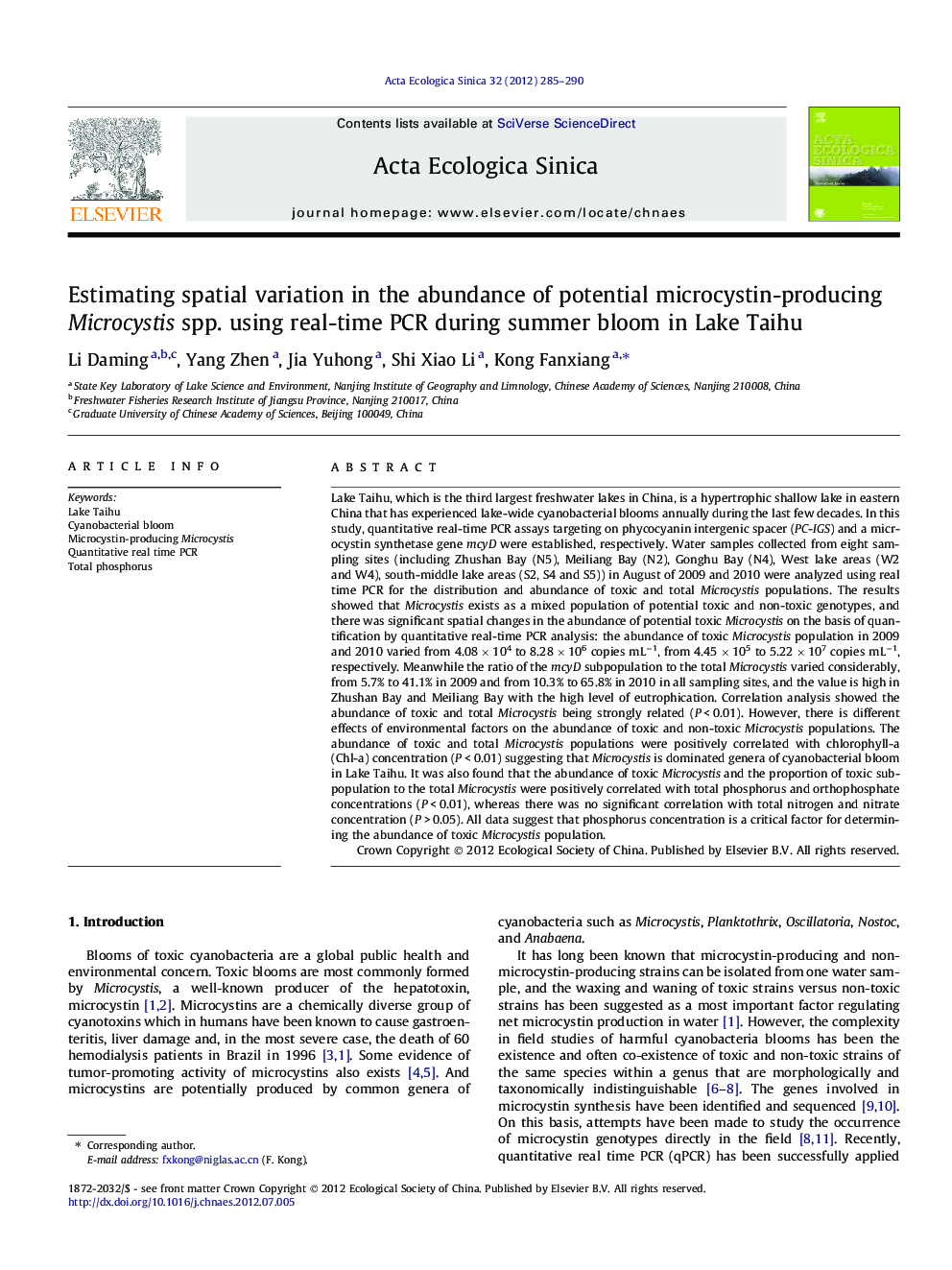| Article ID | Journal | Published Year | Pages | File Type |
|---|---|---|---|---|
| 4379976 | Acta Ecologica Sinica | 2012 | 6 Pages |
Abstract
Lake Taihu, which is the third largest freshwater lakes in China, is a hypertrophic shallow lake in eastern China that has experienced lake-wide cyanobacterial blooms annually during the last few decades. In this study, quantitative real-time PCR assays targeting on phycocyanin intergenic spacer (PC-IGS) and a microcystin synthetase gene mcyD were established, respectively. Water samples collected from eight sampling sites (including Zhushan Bay (N5), Meiliang Bay (N2), Gonghu Bay (N4), West lake areas (W2 and W4), south-middle lake areas (S2, S4 and S5)) in August of 2009 and 2010 were analyzed using real time PCR for the distribution and abundance of toxic and total Microcystis populations. The results showed that Microcystis exists as a mixed population of potential toxic and non-toxic genotypes, and there was significant spatial changes in the abundance of potential toxic Microcystis on the basis of quantification by quantitative real-time PCR analysis: the abundance of toxic Microcystis population in 2009 and 2010 varied from 4.08Â ÃÂ 104 to 8.28Â ÃÂ 106 copies mLâ1, from 4.45Â ÃÂ 105 to 5.22Â ÃÂ 107 copies mLâ1, respectively. Meanwhile the ratio of the mcyD subpopulation to the total Microcystis varied considerably, from 5.7% to 41.1% in 2009 and from 10.3% to 65.8% in 2010 in all sampling sites, and the value is high in Zhushan Bay and Meiliang Bay with the high level of eutrophication. Correlation analysis showed the abundance of toxic and total Microcystis being strongly related (PÂ <Â 0.01). However, there is different effects of environmental factors on the abundance of toxic and non-toxic Microcystis populations. The abundance of toxic and total Microcystis populations were positively correlated with chlorophyll-a (Chl-a) concentration (PÂ <Â 0.01) suggesting that Microcystis is dominated genera of cyanobacterial bloom in Lake Taihu. It was also found that the abundance of toxic Microcystis and the proportion of toxic subpopulation to the total Microcystis were positively correlated with total phosphorus and orthophosphate concentrations (PÂ <Â 0.01), whereas there was no significant correlation with total nitrogen and nitrate concentration (PÂ >Â 0.05). All data suggest that phosphorus concentration is a critical factor for determining the abundance of toxic Microcystis population.
Related Topics
Life Sciences
Agricultural and Biological Sciences
Ecology, Evolution, Behavior and Systematics
Authors
Li Daming, Yang Zhen, Jia Yuhong, Shi Xiao Li, Kong Fanxiang,
